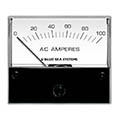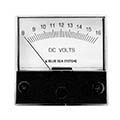Categories
- Wire & Cable
- Multi-conductor & Signal Cable
- Battery Cable Assemblies
- Terminals and Connectors
- Electrical Parts
- Electrical Tools
- ID Products
- Wire Management
- Tape & Sealant
- Mounting Panels & Panel Blanks

Need Help?
Click HereGet a Business Account
Apply HereMeters
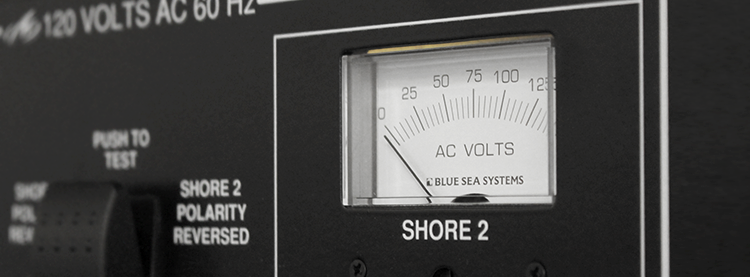
What are meters?
Meters are specialized pieces of equipment designed to give readings based on electrical parameters to let you know that your equipment is functioning within proper ranges. That is to say that meters give a quick visual indication that everything is running properly. Commonly, meters are available in two varieties: analog or digital. We will cover the difference between those further down the page. Basically, they are extremely useful devices that allow you to be aware of potential issues before they arise.
"meters give a quick visual indication that everything is running properly."
Where are these products implemented?
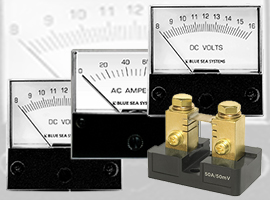
Meters allow operators to monitor their electrical system
Meters are implemented in the majority of marine vessels as they allow the operator to monitor their electrical system. This is why they are such a common part of the marine industry. All Pacer meters are perfect for new installs. They are also ideal when replacing or maintaining equipment on your boat. If you have corroded meters or damaged meters, then these are the perfect parts for your needs. All you will need are the proper tools, the correct wire, and the correct terminals. Let us shift our focus to the difference between bus bars and terminal blocks.
What types of meters are available?
The main types of meters that are available are ammeters, voltmeters, and temperature gauges. Some of those are available in different sizes or ranges of measurement for different applications. As we said above, meters are used to indicate that your electrical system is functioning properly and as such, we carry a range of meters to measure different aspects. Below, we will take a look at some of the different types of meters we offer and what they are used for.
Ammeters are used to detect amps and are designed for either AC or DC applications depending on the style you choose. Some ammeters measure up to 50 amps while others go much higher. This is so that you can find the exact ammeter that best suits the needs of your specific application. We even offer micro ammeters if limited space is an issue.
As the name implies, voltmeters are used to measure voltage. Again, this can be either AC or DC depending on the style that you choose. Some voltmeters measure low amounts such as the micro voltmeter which measures 8-16 volts, while others may measure up to 150 volts. Just as with the ammeter, we offer voltmeter options if limited space is an issue.
Temperature monitors, or thermometers, measure heat. The range of our temperature monitor is from -40°C to 125°C (-40°F to 250°F) making them ideal for a range of applications and specifically suited for the marine environment. To make this temperature monitor even better you can switch between Fahrenheit or Celsius depending on your specific desire.
What is the difference between an analog meter and an OLED meter?
In the most basic sense, an analog display uses moving parts such as a needle that moves back and forth whereas an OLED (organic light-emitting diode) is a digital display with no moving parts. Although the difference between analog and digital signals goes much further than the visual aspect, for the sake of this discussion we do not need to go deeper. Basically, you just need to decide, do you want a moving needle indicator similar to an older speedometer in your car, or do you want a display similar to an illuminated alarm clock? One question we offer get when people are deciding on which meter they want is: what do I do with a shunt?
![]()
Analog Display
![]()
Digital Display
Where would I use a shunt?
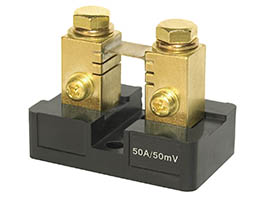
A shunt is a device that allows an electrical current to pass around another point in the circuit by creating a low resistance path. Shunts can actually serve a few purposes beyond bypassing a point in a circuit. They can be used to allow the measurement of current values too large to be directly measured by certain ammeters. In this way, shunts are able to be installed parallel to the meter and measure without disrupting the circuit. Just like shunts, transformer coils tend to cause some confusion.
What do I use a transformer coil for?
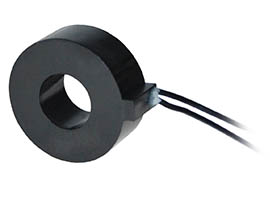
Transformer coils are commonly used to transform amps to milliamps. This allows you to send the proper amperage to a sensitive meter without overloading it. Our transformer coils convert 150 amps, 100 amps, or 50 amps to 50 milliamps depending on the style that you choose to use. We also offer transformer coils designed to work with voltage rather than amperage. Now that we have looked at the different meters and accessories that we offer, the next step is helping you to select the correct meter or meters for your specific applications.
How do I select the correct meter for my needs?
Selecting the correct meter for your application starts with knowing what it is that you are wanting to measure. Need to measure amperage? Use an ammeter. Want to measure voltage? A voltmeter is perfect for that. Once you know what it is that you are measuring, the next step is to determine the range in which you need to be measuring. This is where things get tricky. The best bet is to look at the manual for the piece of equipment you are intending to measure and base your decision on what they are recommending. We understand that selecting the correct meter is not an easy task. Contact a Pacer Group expert today and let us help.
*This page was updated on 03/31/2022*



